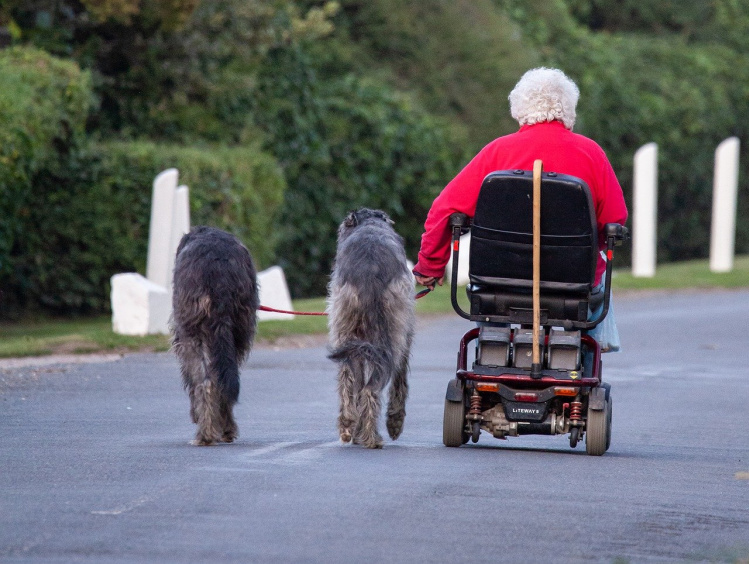Top Tips For Scooter Safety

Yourself
- You should be able to see well enough to drive a mobility scooter safely.
- The seating position should be comfortable so that you can have proper control of the equipment.
- Keep your personal possessions such as the mobile phone, wallet, and handbag tucked away safely and out of sight.
- Get some training before you ride the scooter for the first time.
- Make sure you are confident of steering the scooter well, going backwards, turning around, stopping, and going up and down safely.
Your scooter
- Know the range of your mobility scooter, and don't try to push its boundaries.
- Don't overload the equipment with shopping or any other goods.
- Check the lights and tires of the scooter regularly. Keep the tires at the pressure recommended by the manufacturer to be safe and the tires to last as long as possible. Replace the tires when they are worn. Use the lights whenever it's overcast, gloomy, or in the evenings/nights, and replace dead bulbs immediately.
- Don't store anything on the handlebars as they are only for steering. The scooter will become unstable and difficult to control if you hang bags on the handlebars.
- People like Jossie Solheim prefer to pimp their ride. In fact, Jossie's "Speedy McNipster" is shown below in Christmas regalia. But decorations shouldn't get in the way of scooter safety. Don't add anything to the scooter that could get caught in the wheels or any other part of the equipment. You should also make sure that you are not going to get tangled up or trip yourself.
- Even though insurance isn't compulsory, it is still a good idea to protect yourself. It can protect you in cases of accidental damage, theft, or any negligence claims that may arise. On the other hand, some policies include breakdown insurance to get you home if the mobility scooter lets you down. This website has a large blog section with plenty of helpful info,
Your driving style
- Class 2 scooters are designed to be driven only on footpaths and pavements. Class 3 scooters are designed to be driven on the road while 4 mph is the maximum speed on pavements, and 8 mph is the maximum speed on the road. If you own a road-going Class 3 scooter, you should switch it to 4 mph maximum speed when using it on the pavement.
- Even though 4 mph is the speed limit when riding on pavement, it doesn't mean you should ride at that speed at all times. In crowded, cramped, or unfamiliar places, you should ride the scooter slowly.
- Pedestrians have the right of way, and you should always give way to them when riding the scooter. Be aware of children that may not be paying attention to you, and they may run into your path. In fact, older people and kids probably can't jump out of your way.
- If you are riding on the road, you need front and rear lights, indicators, and a horn. Since you are travelling a lot more slowly than other vehicles, you should use great care and common sense at all times. You should have enough time and space to complete any manoeuvre and should never go on a motorway.
Winter hazards
- Make sure that you take extra care during the winter. The pavements and roads may be converted by ice and snow and be slippery.
- Dress warmly with a waterproof top layer. Some mobility scooters provide a weather cab to protect the rider from the worst of the winter.
- Use the lights of the scooter to be visible in gloomy weather. Get some highly visible accessories such as strips to attach to legs and sleeves. You may also consider gilets & bags made with reflective material.
- Have a mobile phone in case of an emergency. Make sure the mobile phone is fully charged before you leave the house. You should also have all the important numbers you need during an emergency. Get a GPS tracker so that your rescuers know where to find you in an emergency.
- The range of your scooter will be less in colder weather.
- Even if you are not using the mobility scooter during the winter months, have the battery charged. If the battery becomes completely discharged, it may not charge up when you want to use the scooter in the spring.
- Protect the equipment from winter weather if it is left outdoors. Use a waterproof cover since dampness can play havoc with the electronics of the scooter.
*Collaborative post







No comments